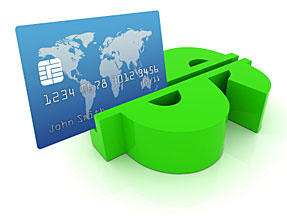 In our last post we discussed 4 of our 9 ways to prevent credit card chargebacks in your e-business. These four steps were primarily related to legitimate customer purchases who are filing chargebacks for varions reasons.
In our last post we discussed 4 of our 9 ways to prevent credit card chargebacks in your e-business. These four steps were primarily related to legitimate customer purchases who are filing chargebacks for varions reasons.
Most of your credit card chargebacks will come from transactions that are fraudulent. Online credit/debit card fraud is one of the biggest risks and expenses for online businesses. With every passing month those who conduct fraudulent purchases get smarter and smarter with how they steal your money. The key to preventing these chargebacks is preventing the order from occurring in the first place. However, you can still win chargebacks on fraud purchases if you follow some of these steps.
5. Stop Accepting American Express.
I’m a proud AMEX cardholder. I frown upon businesses when they hand my pretty gold AMEX back to me and say “I’m sorry sir, but we do not accept American Express”. Yet, as a merchant I find it hard to justify keeping my AMEX merchant account. When we accepted AMEX on our site an overwhelming 95% of all fraudulent charges were with AMEX cards.
Why? I’m not sure. Perhaps their security and card holder data protection is less than desirable. I think the most likely reason is that AMEX account numbers are bigger prizes for thieves. Most AMEX cards do not have predefined spending limits so your chance of running up the tab is much greater with the AMEX.
6. Require a full AVS and CVV2 match on all transactions.
AVS stands for “Address Verification System”. This checks the cardholder’s billing address for the details submitted on the transaction. Setting the AVS response to fully match the street address and zip code are critical to prevent chargebacks. If the AVS fails in any measure you are at risk of losing a chargeback case. Furthermore, the CVV2 security code should always be collected and must always match. This is the 3-digit code on the back of Visa/Mastercard and the 4-digit code on the front of an AMEX card.
A typical AVS/CVV2 response should be: “YYY” representing “Yes” for address, “Yes” for zip code, and “Yes” for CVV2 match.
7. Investigate alternate shipping addresses.
Anytime a customer submits an order where the shipping address is different than the billing address, you are risk. Regardless of whether or not you obtain proof of delivery, if you ship to any address other than the verified billing address you will lose a chargeback claim every time. This means that ANY time you ship to a different address you must be absolutely sure it’s a legitimate order.
8. Look for signs of fraud on each order.
Look for warning signs such as non-related, random items in cart, multiple attempts to checkout, fake or free email addresses, and expedited delivery. All of these are triggers for potential fraud orders and should be weighed heavily in your anti-fraud measures.
9. Require signed proof of delivery with your shipping carrier.
If a customer files a chargeback claiming non-receipt of your item the only way you can win is by providing proof of delivery, also referred to as “POD”. Unfortunately, merchant banks don’t typically accept a tracking number without a signature as proof of delivery. Most carriers will leave packages at the front door giving you no chance of winning a chargeback claim.
Obtaining a direct signature at time of delivery is the most guaranteed way to win a chargeback. This typically costs anywhere from $1-3 extra per shipment and can sometimes be inconvenient for customers who aren’t home to sign for packages. However, if you follow all of these steps and ship to the AVS/CVV2 matched billing address and obtain a direct signature you will usually win against non-receipt claims.
Overall, you have to factor the risk of chargebacks versus the inconvenience to customers in requiring direct signature. Most companies will set a value threshold where any shipment valued over a certain dollar amount will require direct signature.
Following these simple steps will reduce your chargebacks and keep your hard-earned money in your bank account where it belongs.
What are some of the ways you’ve found to combat credit card chargebacks? Leave us a comment below and let us know!
